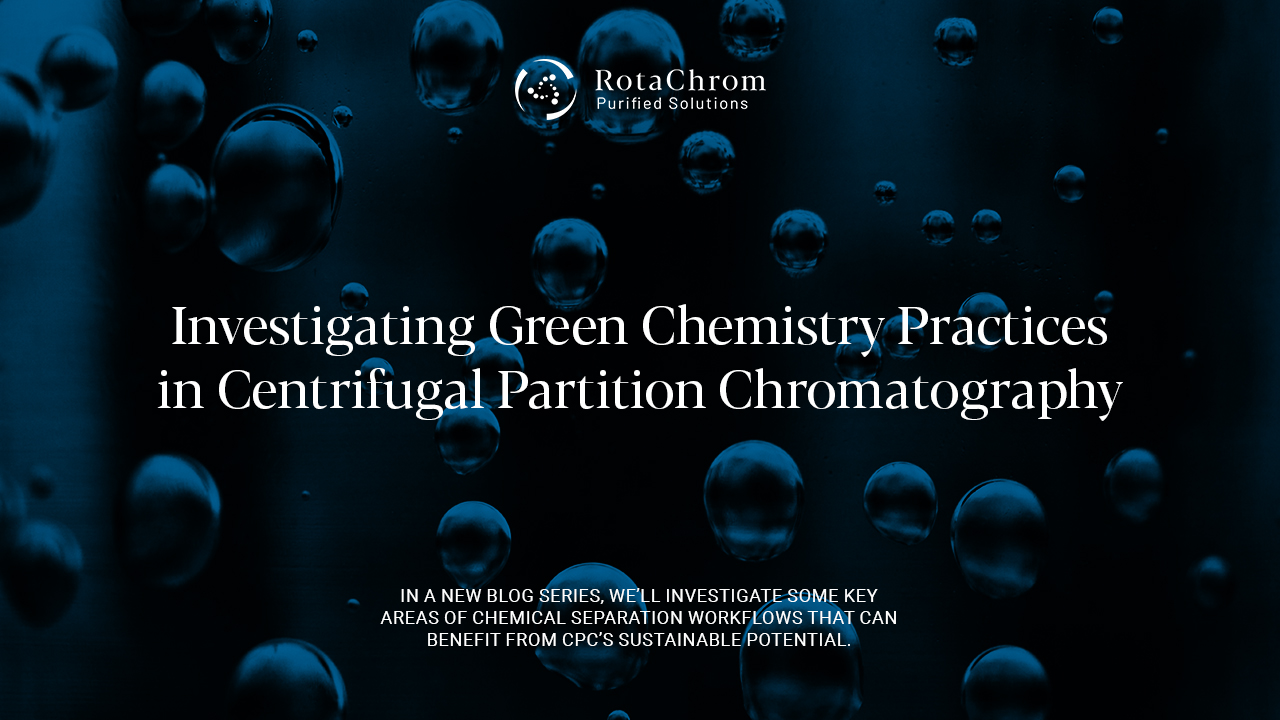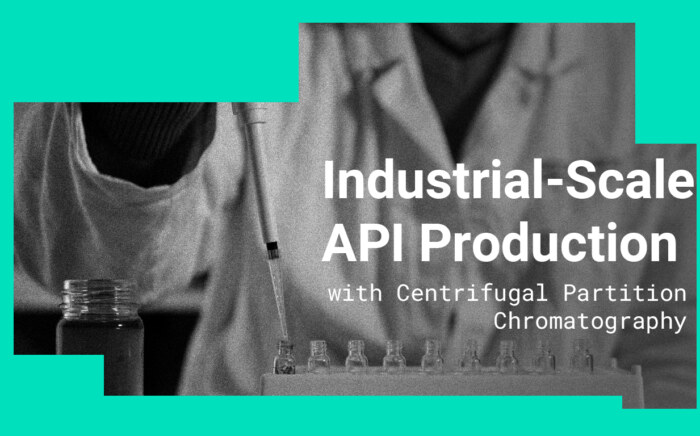Increasing separation efficiency by pH adjustment in Centrifugal Partition Chromatography
NewsInvestigating Green Chemistry Practices in Centrifugal Partition Chromatography — Part I
Despite its widespread use in the chemical industry, traditional preparative-scale liquid chromatography suffers from sustainability issues due to its high solvent consumption and solid waste from spent silica gel packing. On the other hand, solid support-free techniques like hydrostatic countercurrent chromatography — also called centrifugal partition chromatography (CPC) — offer a promising, green alternative to traditional purification methods. CPC also features a wider range of available solvents compared to other processes.
In a new blog series, we’ll investigate some key areas of chemical separation workflows that can benefit from CPC’s sustainable potential. To kick things off, let’s discuss how CPC works, why traditional chromatography is considered unsustainable and why CPC enables greener separation processes than solid-based systems.
The Basics of CPC
In contrast to conventional solid-liquid chromatographic techniques, CPC consists of liquid stationary and mobile phases. The stationary phase is held in place by a strong centrifugal force inside the column, while the mobile phase is pumped through it. The partitioning of the solutes between the two immiscible phases governs purification and affects the time spent within the stationary phase, which determines solute retention.
An Alternative to Solid-Based Systems
CPC, as a liquid–liquid system, offers significant cost benefits because it eliminates the need to purchase silica gel and reduces the amount of required solvents. The few types of commercially available solid silica-based packing gel limits stationary phase options. And, when the gel, which fills the entire column, is saturated due to adsorption and needs to be changed, the whole column of gel must be replaced which generates a lot of waste.
Being constrained to silica gel stationary phases also limits traditional chromatography’s flexibility. When fine-tuning the separation process, chemists usually only alter the mobile phase composition instead of adjusting the stationary phase. CPC takes advantage of a wider range of possible biphasic liquid-liquid systems using the same column.
Substituting halogenated and petroleum-based solvents with green, renewable alternatives reduces the environmental impact of chromatography. Recent regulations have even banned several hazardous solvents, including n-hexane, making the use of green alternatives important.
How to Choose Your Solvents
Determining potential biphasic systems by trial and error is a time-consuming task due to the wide polarity range to cover the most apolar to most polar systems. To overcome this challenge, several regulatory and industry bodies have produced guides on which solvents to use based on properties such as hazardousness, toxicity and recyclability. And, both academic and industrial researchers have composed simple strategies to help you choose the most effective solvent system for a given application.
Ideal solvents for CPC have low viscosity, are UV transparent, cover a wide polarity range and have strong interfacial tension between the aqueous and organic phases. When accounting for additional post-separation fraction processing, solvents with low boiling points work best.
Green solvents include the following:
– 2-Methyl-Tetrahydrofuran (2-Me-THF). This solvent is a green alternative to THF in synthesis because it is nontoxic, has low miscibility in water and is relatively stable compared to other heterocycles.
– Limonene. This apolar solvent has a D-isomer, which is a major component of the essential oils in citrus fruits.
– Cyclopentyl methyl ether (CPME). This solvent can directly replace dichloromethane (DCM) in the widely used MeOH-DCM system.
– Water. This safe, environmentally friendly solvent is usually the first choice for a green CPC application for aqueous two-phase systems (ATPS). Keep in mind, however, that ATPS can increase flow rates, adversely affecting stationary phase retention and making separation more difficult.
Another group of potential green compounds are deep eutectic solvents (DES) — more specifically, NaDES, when their components are of natural origin. These solvents are characterized by a large depression of freezing points, usually higher than 150°C. You can acquire DES by simply combining two safe, cheap, renewable and biodegradable components capable of forming a eutectic mixture. If the challenge of solute recovery and component recycling can be solved, NaDES would be a promising alternative to water-based solvent systems, providing a polarity range that facilitates the separation of less polar and hydrophobic compounds.
To learn more about CPC, visit our technology page.
Want to get in touch?
Fill in the form below so our representatives can contact you. We will also let you in on more information on our technology.



